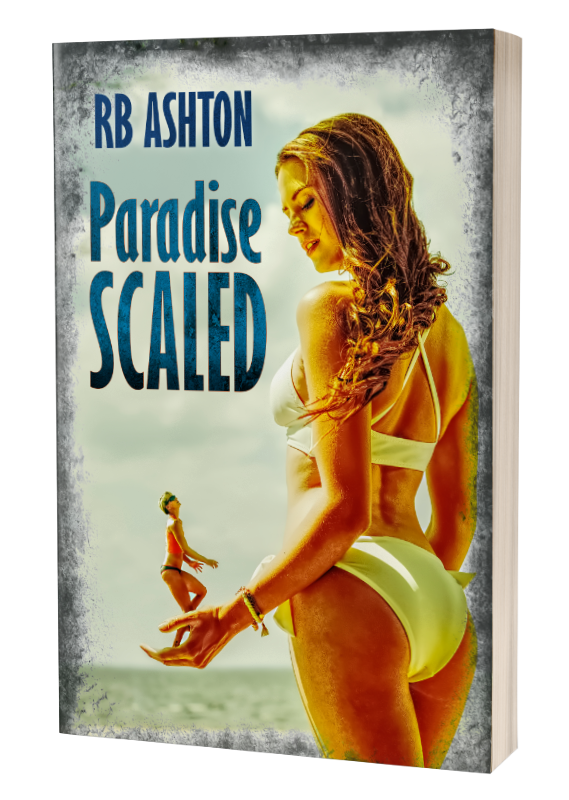Small World by Tabitha King feels like a good place to start when considering female scale with a direct crossover into horror, particularly focusing on a cruel woman in power. King is the wife of Stephen King, who highlights the book in his history of the horror genre, Danse Macabre, but I have to say it doesn’t come close to his work in overall quality.
In summary, Small World sounds like a gold mine for fans of either miniaturised women being terrorised, or a giant woman dominating. It has a great couple of covers and an enticing story: Dorothy “Dolly” Douglas, a rich, spoilt matriarch obsessed with miniatures gets hold of a shrinking device which she uses to capture and torture Leyna, a beautiful journalist who publicly slighted her. Around that, there’s a more complex familial story about the women’s daughter, who creates miniature furniture and collectibles.
How Much Size Change is in Small World?
The story has a lot of build up laying out these relationships, and a lot of focus on the inventor of the shrinking ray, a reclusive loser who experiments on animals. Then there’s a big chunk in the middle where the journalist is captured and tortured, which will most interest size fans. Leyna is shrunk to a few inches tall and put in a doll house and teased through prodding and spraying with water, with Dorothy delighting in this revenge while the inventor, as her accomplice, becomes protective over the journalist.
Sounds like fun, yes, except Leyna has a bizarrely abstract perception of events where because she’s small she can’t piece together the fact that she’s small, and instead describes giant Dorothy in disembodied shapes, making the things she endures a bit hazy and disjointed rather than a clear account of a giant abusing a tiny person. It gets pretty dark, still, and certainly ramps up the psychological horror factor – but the interaction is limited and the final drama is Leyla’s own making.
The book’s plot overall also mirrors that disjointed feeling; the opening and closing thirds focus on Dorothy’s family relationships and her obsessions, to a degree that the whole shrinking woman aspect ultimately does nothing to drive the main plot forward. The overarching story doesn’t amount to much in the end either, with the shrinking ray only used to shrink a few children, with little consequence beside the fact that they’re shrunk (I mean, that might seem like a big deal but nothing really happens), and there’s little real point in anything arising from Leyla’s ordeals.
Rather disappointing as a book, though as an example of size producing terror, it is at least a good milestone for the genre.









